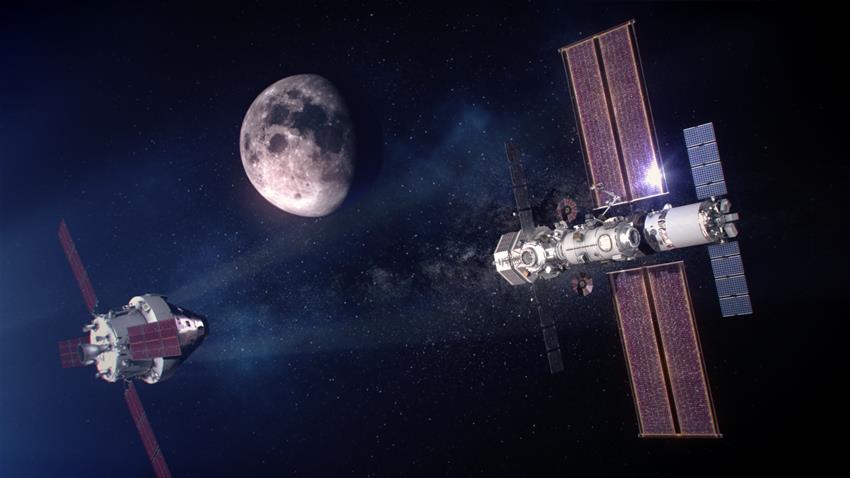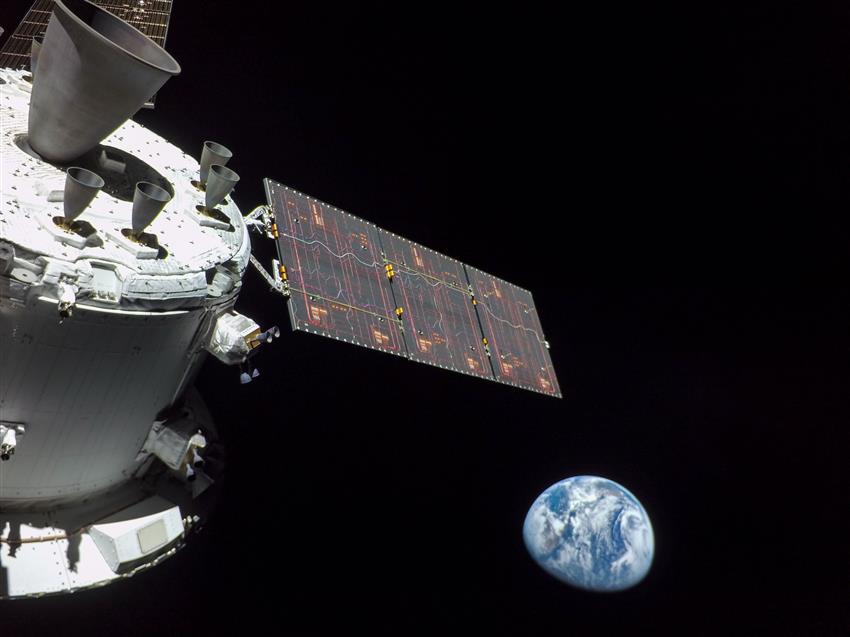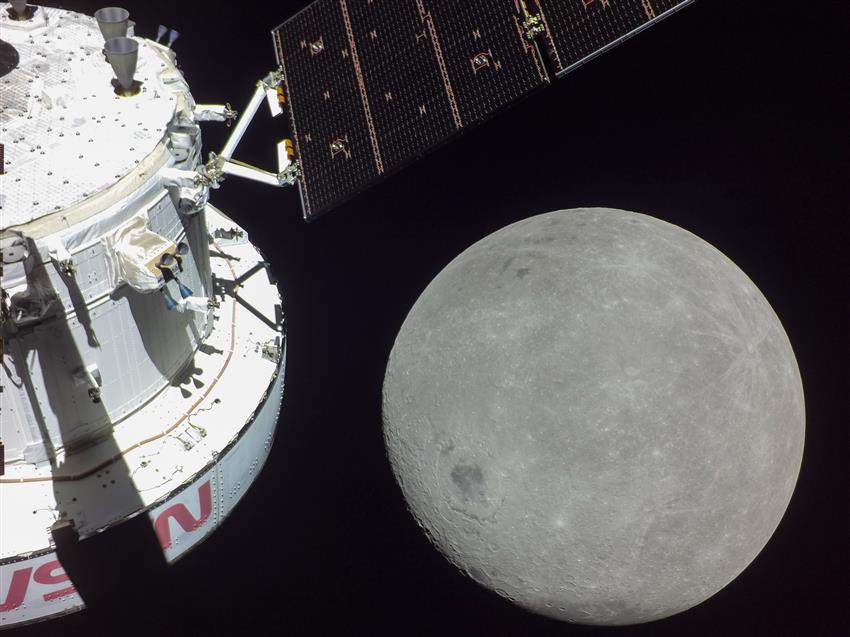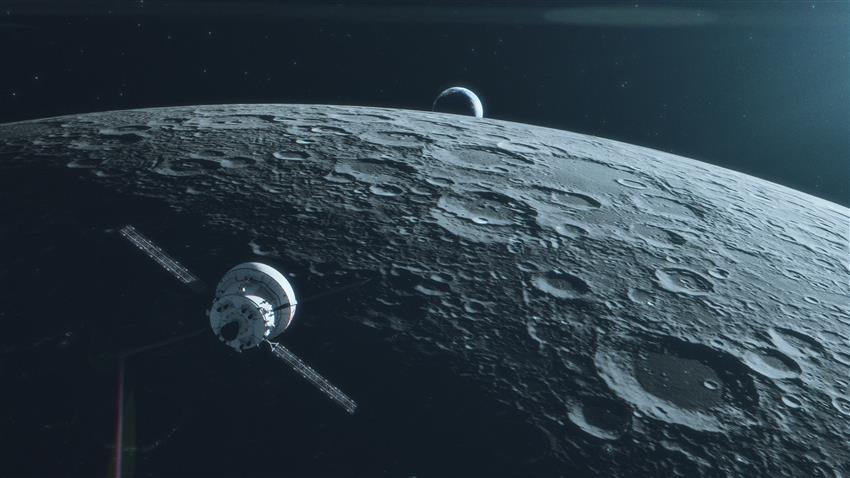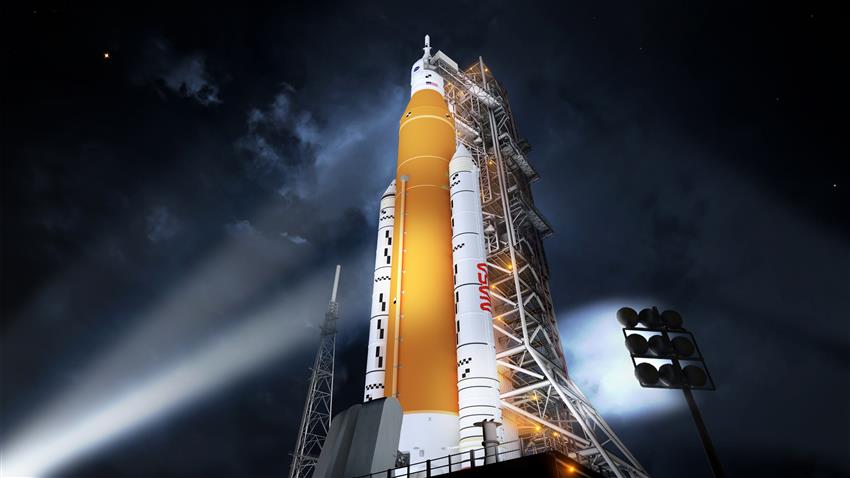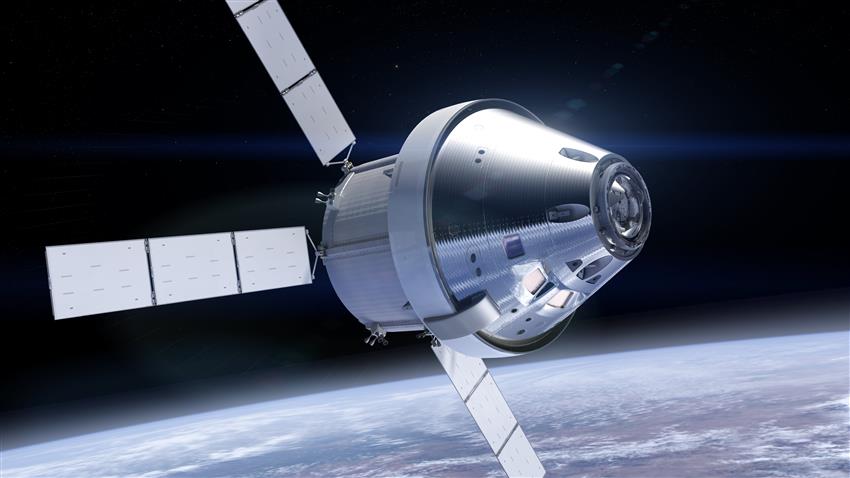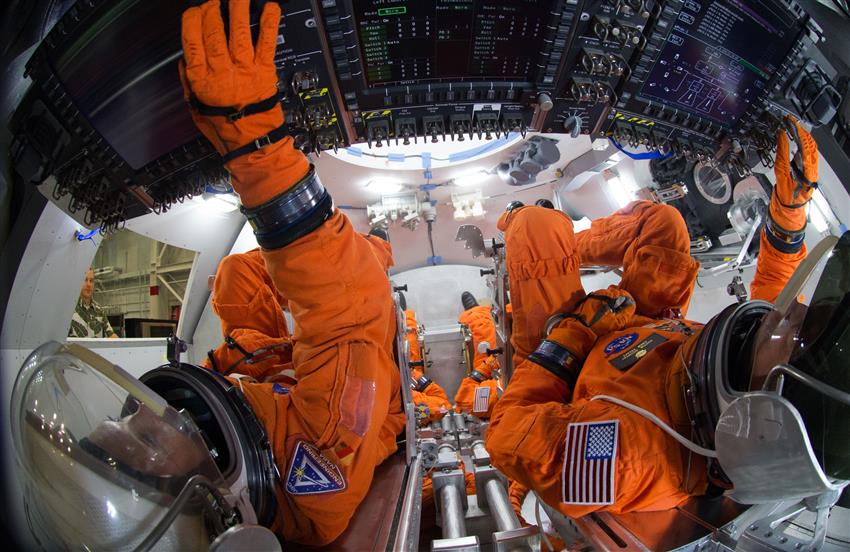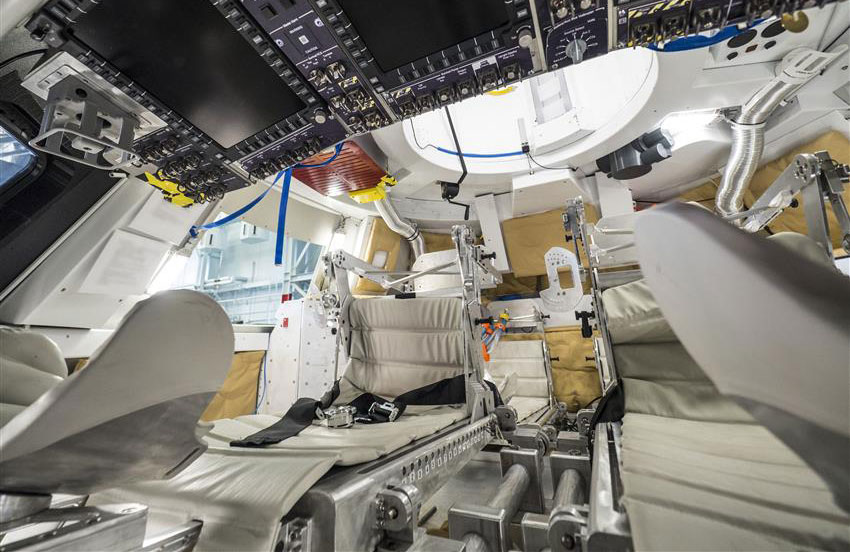The Artemis campaign: humanity's return to the Moon

The global space community is undertaking Artemis, a multi-mission campaign designed to push human space exploration deeper into space to the Moon and on to Mars.
What is the Artemis campaign?
The NASA-led Artemis campaign is a new chapter of lunar exploration designed to send humans farther into space than ever before.
An international collaboration led by NASA, with contributions from the European Space Agency, the Canadian Space Agency (CSA), the Japan Aerospace Exploration Agency and the Mohammed bin Rashid Space Centre of the United Arab Emirates, and the participation of several companies, the campaign builds the expertise for a lasting return to the Moon. The campaign also lays an important foundation for deep-space exploration to more distant destinations like Mars.
Like the Apollo program over 50 years ago, Artemis begins with missions around the Moon before a mission that lands on the lunar surface. In addition to crewed and uncrewed missions, the Artemis campaign includes the construction of the Gateway space station in orbit around the Moon. Through the Artemis missions, NASA will land the first woman and the first person of colour on the lunar surface.
According to current plans, designed to support human presence on and around the lunar surface, astronauts would travel from Gateway to the Artemis Base Camp using the Human Landing System.
In return for contributing Canadarm3, a robotic system, to Gateway, Canada receives a range of opportunities for lunar science, technology demonstration and commercial activities, as well as two astronaut flights to the Moon. CSA astronaut Jeremy Hansen is part of Artemis II, the first crewed mission to the Moon since .
What are the Artemis missions?
The Artemis missions are increasingly complex endeavours that lay the foundation for sustainable human and robotic exploration of Earth's only natural satellite, the Moon.
Missions include:
- Artemis I, an uncrewed test flight of the Orion spacecraft, launched on the Space Launch System (SLS) rocket on ;
- Artemis II, the first-ever crewed test flight of the Orion spacecraft, targeted to launch in ; and
- Artemis III, currently targeted for mid-, will fly astronauts to the Moon. The mission will land humans on the lunar surface.
During later missions, astronauts will dock Orion to Gateway, a small space station to which Canada is contributing Canadarm3. Gateway is critical to sustainable lunar exploration and will serve as a model for future missions to Mars. From Gateway, astronauts will be able to venture to the lunar surface.
Named after the mythological figure Artemis, who is both Apollo's twin sister and Goddess of the Moon and the hunt, this ambitious campaign encompasses efforts to send the first woman and the first person of colour to walk on the surface of the Moon. These missions will also prepare and propel us onward to Mars. As the "torch bringer," Artemis will light the way for human exploration of the red planet.
Artemis I: the first launch of the SLS with Orion
Artemis I provided a foundation for human deep-space exploration. As an uncrewed test flight, Artemis I demonstrated the performance of the SLS rocket. The launch of Artemis I took place on .
During this flight, the Orion spacecraft launched from Florida on the SLS and ventured thousands of kilometres beyond the Moon. Orion's systems were then monitored to ensure a safe Crew Module re-entry, splashdown, and recovery. Returning to Earth on , Orion stayed in space longer than any spacecraft built for astronauts ever has without docking to a space station.
Artemis II: the first crewed mission around the Moon in half a century
Canadian Space Agency astronaut Jeremy Hansen is part of Artemis II, the first crewed mission to the Moon since . This historic mission, planned to launch in , will make Canada the second country to have an astronaut fly around the Moon.
Like the crew of Apollo 8, Artemis II astronauts could witness the "Earthrise," a breathtaking view of our planet suspended in the blackness of space.
In addition to being the second test flight of the SLS, this important mission will allow a crew of four astronauts to monitor several vital factors, including:
- mission planning
- system performance
- crew interfaces
- guidance and navigation systems
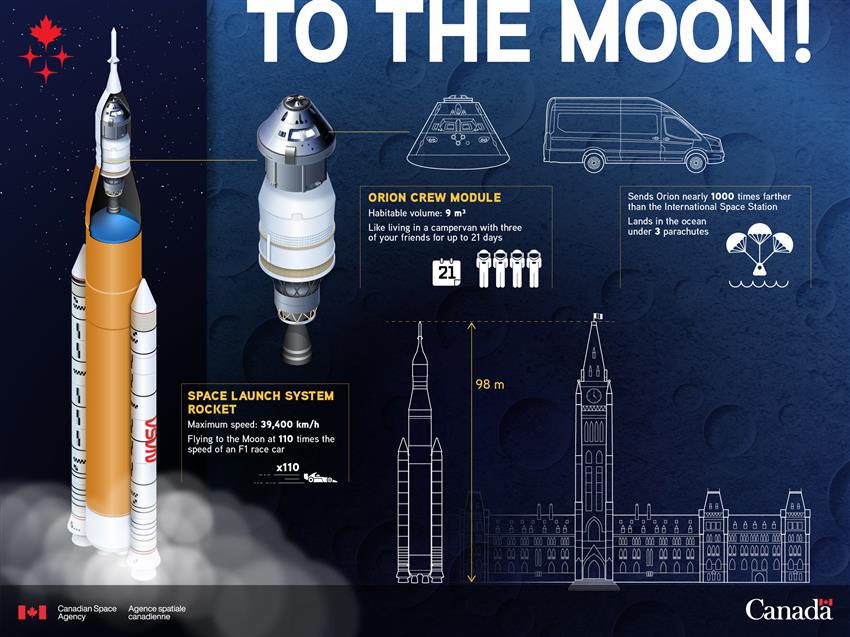
Text version - To the Moon! – Infographic
Orion is a new exploration vehicle that will carry Artemis crews to space. It is designed to be launched by NASA's SLS rocket, one of the most powerful rockets in the world. (Credit: CSA)
The crewed Orion spacecraft will take a unique trajectory known as "hybrid free return," which will circle our planet twice to gain enough speed to travel the distance to the Moon. Once there, Orion will use the Moon's gravity to slingshot around the far side and return to Earth.
The exact duration of the mission has yet to be confirmed, but should be about 10 days. The flight path for Artemis II involves a mission duration of at least eight days.
The mission will launch from NASA's Kennedy Space Center in Florida and splash down in the Pacific Ocean upon its return to Earth.
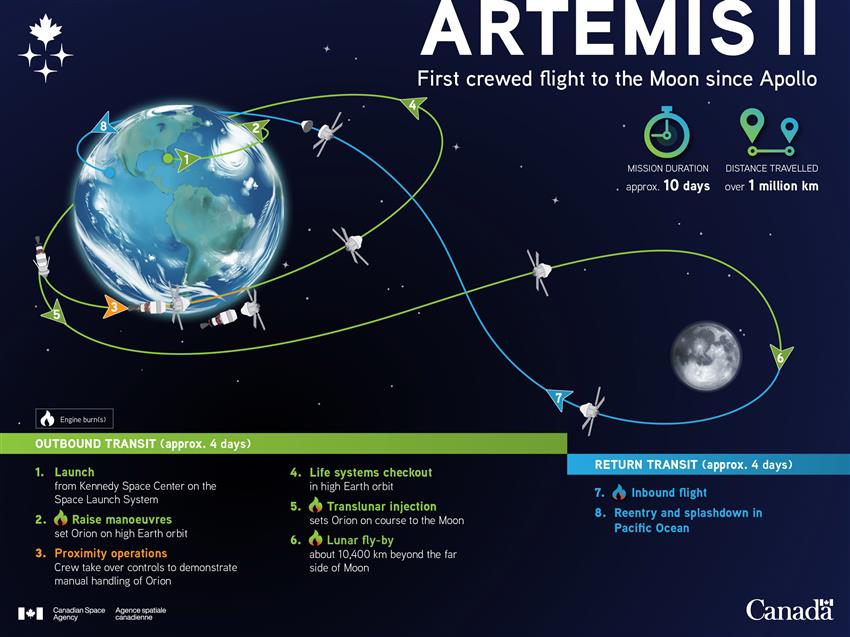
Text version - Artemis II: First crewed flight to the Moon since Apollo – Infographic
During Artemis II, four astronauts will fly around the Moon in the Orion capsule. The approximately 10-day flight test will pave the way for lunar surface missions, including landing the first woman and first person of colour on the Moon. (Credits: CSA, NASA)
In his first vlog of , CSA astronaut Jeremy Hansen reflects on coming together to achieve big goals and how he thinks he will react when he sees our home planet from the perspective of the Moon. (Credits: CSA, NASA, Fulwell 73 UK Limited)
Transcript of the video entitled Vlog 6: One tiny marble in space
Christina Koch, NASA astronaut and Mission Specialist on Artemis II, reflects on the space collaboration between Canada and the United States. Our collaboration spans from the iconic Canadarm and Canadarm2 to missions like Expedition 59, Artemis II and upcoming Gateway. (Credits: CSA, NASA)
Transcript of the video entitled Beyond borders: A celebration of US–Canada space collaboration
Artemis III: the return of humans to the Moon's surface
Artemis III will be the culmination of rigorous testing. During the mission, a crew of four astronauts will once again travel to the Moon. Two Artemis III crewmembers will be transported by a human lander to the Moon's surface, where they will collect a variety of samples intended to deepen our understanding of key aspects of the Moon.
In , the Canadian Space Agency awarded a grant of $300,000 to Western University, whose scientist Dr. Gordon "Oz" Osinski was selected to be part of NASA's Artemis III Geology Team. The team will support the planning and operations of the Artemis III mission, including designing the geology surface campaign of the astronauts on the Moon, to ensure that the mission achieves its scientific objectives.
Maintaining a lunar future
For long-term operations, Gateway provides a staging point for human and robotic lunar missions. The orbiting outpost will support longer expeditions on the Moon, and potentially multiple trips to the surface during a single Artemis mission.
The Gateway-to-surface operational system is similar to how a human Mars mission may be designed - with the ability for some crew to remain in orbit and others to go to the surface. It is important to gain experience using this system on the Moon before the first human missions to Mars.
The SLS rocket
Public and commercial organizations within the international space community are developing a range of vehicles that will help enable human exploration missions to the Moon and Mars.
One of these is NASA's SLS, among the most powerful rockets in the world. Its core stage holds over 2.7 million litres of liquid hydrogen and liquid oxygen. The SLS will produce 15 percent more thrust than the Saturn V rocket that brought astronauts to the Moon during the Apollo missions.
Using additional rocket boosters and stages, the system can evolve and expand according to crew and cargo mission requirements. Different SLS configurations increase payload volume and thrust, allowing more cargo to be sent farther than ever before.
The Orion spacecraft
Orion is a new exploration vehicle that will carry Artemis crews to space. Designed to be launched by NASA's SLS rocket, the spacecraft features life support systems and emergency abort capabilities. It includes the Crew Module, where the crew will live and work during Artemis missions; and the European Service Module, which will carry air, nitrogen, and water for the crew, as well as in-space propulsion and power systems. The Crew Module is able to withstand the intense physical forces and heat during re-entry into Earth's atmosphere.
